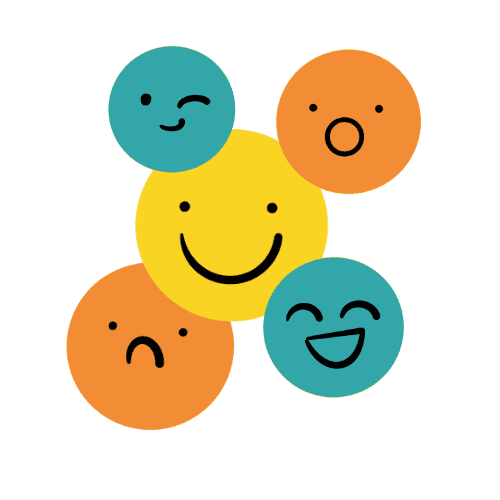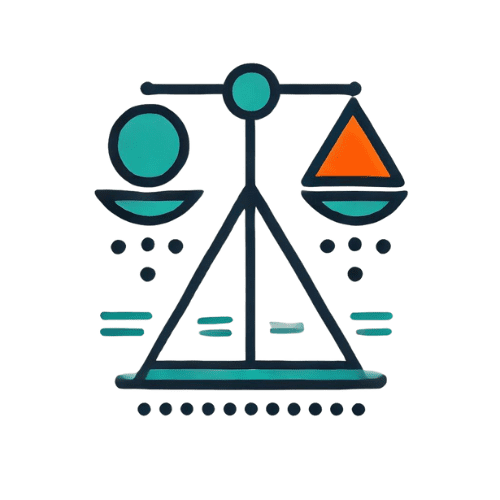Unlock The Secret to Confident Decision-Making
Do you ever feel stuck, paralyzed by a big decision, and not sure which way to turn? You’re not alone. Decision-making can feel overwhelming, whether choosing a college major, deciding on summer plans, or figuring out your career path. But fear not! With the right decision-making techniques and mindset, you can become a decision-making ninja.
Why Decision-Making Matters
Before we jump into the techniques, let’s talk about why honing your decision-making skills is so crucial:
- It builds confidence: The more decisions you make, the more you’ll trust your judgment.
- It brings clarity: A solid decision-making process can help cut through confusion and overwhelm.
- It fosters personal growth: Every decision you make (and even the mistakes) brings new lessons. The more decisions you face head-on, the more you’ll develop resilience, critical thinking, and a sense of ownership over your life.
Ready to improve your decision-making skills? Let’s dive into a few simple but powerful techniques!
Now, let’s explore the six essential checks for effective decision-making:
1. Self-Assessment Check

Before making any decision, it’s crucial to understand yourself and your motivations. This check involves these key tools:
🎯 Values-Alignment
Before making any decision, ask yourself: Does this align with my core values? Your values are your internal compass – they should guide your choices. If you haven’t defined your values yet, check out this step-by-step guide to help you find your values.
Example:
Imagine you’re offered a dream salary, but at a company known for cutting corners and treating people unfairly. Would that money be worth feeling uneasy every time you walk through the door?
💛 Interest-Tick Test!
Don’t force yourself down a path just because it seems impressive to others. Choose directions that genuinely excite and engage you. Passion often leads to success and fulfillment. And don’t ignore what comes natural to you – does this decision fit my personality?
Example:
Your friends are all applying to law school, but you secretly dream of becoming a DJ. Don’t ignore that spark just because it’s not “prestigious” – your passion for music could be your ticket to happiness and success.
👶👴 The Young & Old Test
Make Both Versions of You Proud! Make decisions that both your 10-year-old self and your 80-year-old self would high-five you for. This perspective can help you balance enjoyment with long-term satisfaction.
Example:
Will ‘10-year-old you’, who dreamed of traveling the world, cheer you on? Will ‘80-year-old you’, sitting on a porch reflecting on life, be proud of the choices you made?
⏳ The “10-10-10 Rule” Time Travel Anyone?
One of the most popular strategies is the 10-10-10 Rule, which helps you consider the impact of your decision over time. When you’re facing a tough choice, ask yourself: “How will I feel about this decision 10 minutes from now? What about 10 months from now? And finally, 10 years from now?” This simple exercise helps you consider both immediate and long-term consequences, putting your decision in perspective.
Example:
You’re thinking about adopting a puppy. In 10 minutes, you’ll be ecstatic. In 10 months, you might be stressed about the unexpected cost and responsibility. In 10 years? You could have the best furry friend ever or regret the commitment. This rule helps you see the big picture.
2. Understanding Check

What’s worse than making the wrong decision? Making an uninformed one! This check ensures you truly understand your options.
✍🏼 Keep It Simple!
If you can’t explain your options to a 5-year-old, you might not understand them well enough yourself. Break down complex choices into simpler terms. This clarity can make your decision easier. Check out these learning techniques to help you go back and fill the gaps to understand your options better.
Example:
If you can’t explain how NFTs work to your younger cousin, you may want to rethink or research more before jumping into that world.
👂👂👄 Two Ears, One Mouth
When seeking advice or gathering information to make a sound decision, remember to listen twice as much as you speak. Gather insights from others but beware of others’ opinions overshadowing your own thoughts and feelings.
Example:
When deciding whether to pursue a long-distance relationship, listen to friends who’ve been through it. They might bring up challenges and rewards you haven’t considered.
💭 Expectation Management
This technique helps you avoid disappointment by making sure you’re basing your decision on facts, not just feelings or unrealistic expectations. Before diving into any choice, ask yourself: “Am I being realistic about what this decision will actually bring?” If not, go deeper and learn more.
Example:
You’re considering studying abroad. In your mind, it’s all about fun travel and making new friends. But what about the long study hours, language barriers, or homesickness? By managing your expectations, you’ll have a more balanced view of the experience—yes, there will be amazing moments, but there will also be challenges. This will prepare you mentally, making the whole adventure more rewarding in the long run.
3. Growth Check

This check helps you choose options that will contribute to your personal and professional growth.
♟️ Get in the game!
Choose the path that puts you in the action, not on the sidelines. Actively participating in experiences will teach you more than observing from afar. (Imagine athletes vs spectators)
Example:
You’re torn between a safe desk job and a risky position at a startup. The startup might be scarier, but it’s where you’ll learn the most. Sometimes, you’ve gotta play to win.
🍀 Increase your luck surface area!
Opt for choices that expose you to more opportunities – whether it’s networking, new experiences, or skills. Each step builds your toolkit and prepares you for future decisions.
Example:
Should you attend that career fair or binge-watch “Stranger Things”? The career fair might seem boring, but it could lead to unexpected opportunities. Plus, you can always watch Netflix later.
🧗♀️ The Uphill Decision
Embrace challenges! Choose the more difficult short-term option for long-term gains. Remember: nothing worthwhile comes easy in life. Avoid instant gratification and choose delayed gratification for bigger rewards.
Example:
It’s Saturday morning. Should you hit the gym or hit the snooze button? The gym is harder now but future you will thank you for those abs and the healthy habit.
🪴 Overcome “Impostor Syndrome”
Impostor syndrome: “I don’t know what I’m doing. It’s only a matter of time until everyone finds out.” Growth mindset: “I don’t know what I’m doing yet. It’s only a matter of time until I figure it out.”
Remember, the only way to close the gap between where you are and where you want to be is through learning. Every ‘expert’ started out as a beginner.
Example:
You landed an interview for your dream job but feel underqualified. Remember, even successful CEOs started somewhere. Lean in and trust your ability to rise to the challenge and learn along the way. Focus on your strengths and sharpen those weak spots Learn how here.
4. Emotions Check

Let’s face it: our emotions are often louder than our rational thoughts, especially when we’re excited or scared. But they can’t be the only voice guiding your decisions.
😴 Sleep on It
Your brain does some magic problem-solving while you snooze. Things often feel clearer in the morning light. For starters, sleep allows your emotions to simmer, and your brain activates the prefrontal cortex, which helps you make more rational decisions.
Example:
You’re about to text your ex at 2 AM. Sleep on it. Trust me, “morning you” will have a clearer perspective (and probably be grateful for your self-control).
🦋 The “Gut Check” Test
While logic and facts are crucial, your gut instincts shouldn’t be ignored. Your brain is wired to pick up on patterns and emotions that may not be obvious right away. So, after you’ve analyzed the facts, stop and ask yourself:
- Does this decision feel right?
- What does my gut tell me? If something feels off, don’t ignore it.
If something feels off, take a moment to reconsider your options.
🪙 The Coin Flip Trick
Still torn between two options? Assign each to a side of a coin and flip it. Here’s the real trick: Pay attention to your gut reaction when the coin lands. Disappointed? That tells you something!
5. Risk-Reward Check

This check helps you weigh the potential outcomes of your decision.
📝 The Pros/Cons List (With a Twist)
Old School, But Gold!
We all know the classic pros and cons list, but there’s a way to make it more effective. First, create your list of pros and cons, but then rate each point on a scale of 1-5 based on how important it is to you. By giving weight to each factor, you can get a clearer idea of which side holds more value.
Example:
Joining a soccer club team? Pros: team building, physical exercise, make lifelong friends? Cons: cost, limited family quality time, fear of missing out on social events? What weight would you give each factor?
😰💰 The Stress-Reward Test
Is It Worth the Sweat? If something’s going to be stressful, make sure the reward is worth it. Remember, for every ‘yes’ you are silently saying ‘no’ to something else. Balance short-term discomfort with long-term gains.
Example:
Joining a soccer club team will be stressful and time-consuming and you’ll need to make sacrifices, but your team making it to state? Priceless. Make sure the juice is worth the squeeze.
🎭 The Worst-Case Scenario
Imagine the absolute worst that could happen with each choice. Often, you’ll realize it’s not as bad as you thought. And if it is? At least you’re prepared!
Example:
You’re thinking of joining that soccer team. Worst case? Run out of money or get injured and have to quit the team. But hey, you’ll have some great skills and probably new friends for life. It was worth it while it lasted!
6. Influence Test

This final check helps you understand who or what is influencing your decision. Beware of FOMO and peer pressure! Remember, decisions are ultimately yours, but it’s okay to get help along the way. Choose your advisors wisely!
📞 Phone a Friend (or Five) – But Choose Wisely
When you’re feeling stuck, talking it out with someone you trust can help. Whether it’s a mentor, parent, or close friend, getting an outside perspective can provide clarity. However, make sure to choose someone who knows you well and understands your values—someone who will offer objective advice without pressuring you.
Example:
You’re unsure about ending a long-term relationship. Your party animal friend might say “plenty of fish in the sea,” while your romcom-obsessed bestie says “fight for love!” Choose confidants who understand your values and situation.
😊 Surround Yourself with Positive People
Hang with the Glass-Half-Full Crew! Spend more time with optimists – they see opportunities where others see obstacles.
Example:
You’re debating starting a YouTube channel. Hang with friends who say “that’s awesome, how can I help?” not “but what if you fail?” Positivity is contagious, and you need all the good vibes you can get.
Start Small with “Micro-Decisions”
Sometimes, the pressure to make the “perfect” decision can be paralyzing. Instead of focusing on the big picture, start with small, manageable decisions. Break down the larger decision into “micro-decisions” or smaller steps. Each small win will give you more confidence to make larger decisions down the line. The goal is to make the best choice you can with the information you have. Make one micro-decision today, whether it’s what to prioritize on your to-do list or choosing between two activities. Build momentum!
And the beauty of it? You can always adjust course later if needed.
But here’s the kicker: The best decision-makers aren’t afraid to make mistakes. They see every choice as a chance to learn and grow.
What’s one big decision you’re grappling with right now? Apply these six checks and see if they help you gain clarity. Remember, no decision is perfect, but what matters is that you make one, learn from it, and keep moving forward.
Ready to level up your decision-making skills? Check out our full toolkit and explore Chapter 3 of Game-Changing Life Skills for Teens for more tips on building confidence in your choices.
